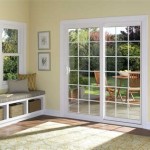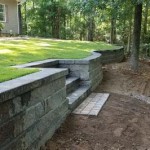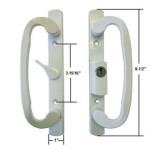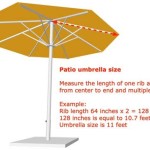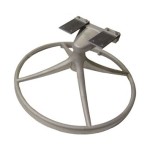Composite Patio Table Plans: A Comprehensive Guide
Composite patio tables offer a durable and aesthetically pleasing alternative to traditional wood or metal outdoor furniture. These tables are constructed from composite materials, typically a blend of wood fibers and recycled plastic, resulting in a product that resists weathering, insects, and rot. This article explores the benefits of using composite material for patio tables, considerations for designing your own table, and various plans to assist in the construction process.
The selection of appropriate plans is critical for a successful composite patio table project. Plans provide detailed instructions, material lists, and cutting diagrams, minimizing errors and ensuring structural integrity. Several factors influence the optimal plan selection, including skill level, desired table size and shape, and the aesthetic preferences of the builder. Resources range from simple, beginner-friendly designs to more complex, multi-tiered tables requiring advanced joinery techniques.
Composite materials are widely used in outdoor construction due to their resilience to environmental factors. Unlike wood, composite materials resist moisture absorption, preventing warping, cracking, and splintering. They also exhibit superior resistance to insect infestation, eliminating the need for chemical treatments. Furthermore, composite materials are often manufactured using recycled plastics, contributing to environmental sustainability. Choosing a composite material specifically designed for outdoor use, that contains UV inhibitors, is crucial to prevent fading and degradation from sun exposure.
Advantages of Composite Materials for Patio Tables
One of the primary benefits of composite lumber is its low-maintenance nature. Unlike wood, it does not require painting, staining, or sealing. Regular cleaning with soap and water is typically sufficient to maintain its appearance. This reduction in maintenance translates to significant time and cost savings over the lifespan of the table. The inherent durability of composite materials also contributes to their longevity, making them a cost-effective investment in the long run. While the initial cost of composite materials may be higher than traditional lumber, the lack of ongoing maintenance and the extended lifespan often offset this initial expense.
The resistance to rot and decay is another critical advantage of composite materials. Outdoor furniture is constantly exposed to moisture, which can lead to wood rot and structural failure. Composite materials are impervious to this type of degradation, ensuring the table remains structurally sound for many years. This is particularly beneficial in humid climates or areas with frequent rainfall. This inherent resistance to the elements makes composite the ideal choice for longevity and minimum upkeep.
Aesthetically, composite materials offer a wide range of options. They are available in various colors, textures, and finishes, allowing for customization to match any outdoor décor. Some composite materials are designed to mimic the appearance of natural wood, providing the aesthetic appeal of wood without the associated maintenance requirements. The consistent color and texture of composite materials also contribute to a more uniform and polished appearance compared to natural wood, which can exhibit variations in grain and color.
Key Considerations When Choosing Composite Patio Table Plans
The first consideration is the skill level and experience of the builder. Simple, straightforward plans are ideal for beginners, while more complex designs are better suited for experienced woodworkers or DIY enthusiasts. Attempting a project that is beyond one's skill level can lead to frustration, wasted materials, and a potentially unsafe final product. Beginners should look for plans with clear, step-by-step instructions and minimal specialized tools or techniques.
The size and shape of the table should be carefully considered, taking into account the available space and the intended use of the table. A small, round table may be suitable for a small patio or balcony, while a larger, rectangular table may be necessary for larger outdoor gatherings. The shape of the table can also influence the overall aesthetic and functionality. Round tables promote conversation and create a more intimate setting, while rectangular tables offer more surface area for food and beverages.
The structural integrity of the table is paramount. The chosen plans should specify appropriate joinery techniques and material thicknesses to ensure the table is strong and stable. Weak joints or insufficient material thickness can lead to instability and premature failure. Thoroughly review the plans and ensure all structural elements are properly designed and executed. Consider the weight the table will need to bear, especially if using it for dining or serving heavy objects.
The aesthetic design of the table is also important. The chosen plans should align with the overall style and décor of the outdoor space. Consider the color, texture, and finish of the composite materials, as well as the overall shape and design of the table. Online resources and home improvement stores offer a variety of composite materials in different styles and colors that can be used to match existing outdoor furniture or create a unique and personalized look.
Examples of Composite Patio Table Plans
A simple square composite patio table is an excellent project for beginners. These plans typically involve cutting the composite lumber to the specified dimensions and assembling the table using screws and basic joinery techniques. The square shape provides a stable and functional surface, and the simple design is easy to customize with different colors and finishes. The structure typically consists of four legs, a frame, and the table top composed of several composite boards.
A round composite patio table offers a more elegant and conversational design. These plans may involve creating a circular table top using multiple pieces of composite lumber, joined together with adhesive and fasteners. The legs can be designed in various styles, from simple, straight legs to more decorative, curved legs. Achieving a perfectly round tabletop might require more advanced cutting and shaping techniques.
A rectangular composite patio table with a built-in umbrella holder is a practical choice for outdoor dining. These plans typically include a central hole in the table top for accommodating an umbrella, providing shade and protection from the sun. The table can be constructed with a sturdy frame and legs to support the weight of the umbrella and other items. The design requires accurate measurements to ensure the umbrella hole is properly positioned.
A composite picnic table with attached benches offers a convenient and space-saving option for outdoor seating. These plans involve constructing a table and benches as a single unit, providing seating for multiple people. The benches can be easily folded up or down, making it easy to store the table when not in use. The design needs careful calculation to ensure structural stability when seating multiple individuals.
A tiered composite patio table provides a visually interesting and functional design. These plans typically involve constructing multiple levels or tiers, creating additional surface area for displaying plants, serving food, or holding beverages. The tiers can be designed in various shapes and sizes, adding visual appeal and creating a unique focal point in the outdoor space. The complexity stems from creating stable and aesthetically pleasing connections between the tiers.
Before embarking on any composite patio table project, it is essential to thoroughly review the chosen plans, gather all necessary materials and tools, and ensure a safe and organized workspace. Proper planning and preparation will significantly increase the chances of a successful and enjoyable construction experience. Safety precautions, such as wearing safety glasses and using appropriate power tools, should always be observed.
The availability of online resources has significantly simplified the process of finding composite patio table plans. Websites dedicated to woodworking, DIY projects, and home improvement offer a vast collection of plans, ranging from simple to complex. Many of these plans are free to download, while others may require a small fee. Additionally, home improvement stores often provide plans and instructions for various composite patio table projects.

Diy Patio Table With Trex Decking Plans Available

Diy Patio Table With Trex Decking Plans Available

Diy Outdoor Table What To Do With Leftover Composite Decking The Nuts

How To Build A Picnic Table In Just One Day Simple Diy Tutorial

Diy Composite Toddler Picnic Table Plans

Diy Outdoor Table What To Do With Leftover Composite Decking The Nuts

Outdoor Dining Table Kreg Tool

How To Build A Picnic Table In Just One Day Simple Diy Tutorial

Diy Composite Toddler Picnic Table Plans

Budget Friendly Diy 8 Foot Outdoor Table Simply Home

